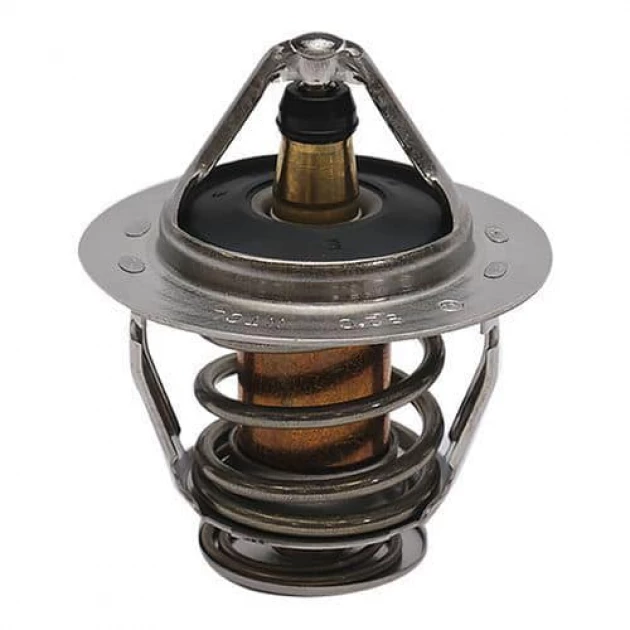MOTOR HUB: Why you should not remove your car's thermostat


Audio By Vocalize
A thermostat is a valve that is used to control the flow of coolant from the engine into the radiator and vice-versa. In most cases, a thermostat is mechanically controlled by utilising a preset engine temperature while fewer models employ electrical signals to close and open the gateway via the control unit.
When an engine is started (let's say in the morning), engine temperature at this time is cold and hence the thermostat. A cold thermostat is fully closed, restricting coolant flow in the engine for quick engine temperature rise. When the preset temperature is achieved, the bellows in the thermostat expand, opening the gate valve, causing the hot coolant from the engine side to flow into the radiator while causing the already cooler coolant in the radiator to flow towards the engine.
A thermal switch located on the upper side of the engine block picks the higher temperatures and triggers the cooling fan to cool the coolant in the radiator just before the exchange is about to happen.
By the time hot coolant gets into the radiator, it means that there will be cold coolant to exchange into the engine. Thermo switch at this time will still signal cooling fans to run until the engine block receives all the cold coolant from the radiator in the engine block. Once the block is saturated with lower temp coolant, the fans will shut, leaving hot coolant in the radiator to be cooled with turbulent air because the vehicle is driving. The closing and opening of the thermostat will carry on with the sequence and in tandem with the Thermo switch for as long as the vehicle is running.
There has been a misconception in the past that strongly misleads car owners. A group of people both clueless mechanics and non-mechanics have in the past misled vehicle owners to believe that in Africa, especially East Africa, vehicles do not need thermostats for normal operations. They believe thermostats are only meant for tropics that experience freezing climates. Whenever vehicles are imported, they immediately advise owners to delete the thermostat with fears that it would result in overheating.
If you have been running with a thermostat for years, whenever you encounter an overheat, they immediately ask you to delete the thermostat. To your surprise, for some time, the vehicle seems to have responded well whenever the thermostat is deleted which seems to prove their theory of a thermostat not suiting our tropics.
You may ask yourself if indeed our tropics are not meant to have thermostats, then why is it that brand new vehicles in the dealerships specifically meant for the Kenyan market come with thermostats, yet from the word go on the production line, the manufacturer knows the cars are destined for the Kenyan market.
If thermostats were of no use, then they would have been made without them. Thermostats control the cooling system and must be part of the cooling system.
To understand why you should not remove a thermostat in your car, we need to first understand the advantages of a thermostat in your engine:
- Faster warm uptime
Modern cars work at pre-determined temperatures. The faster you achieve this temperature, the more advantageous it is to the proper running of a car. A closed cooling system ensures a quick warm up time.
The interior heating system is harnessed from engine coolant temps. Thermostat absence hinders vehicles occupants from enjoying the warmth from the interior heating system, especially during the cold season.
- High fuel consumption: Engine temperature determines how much fuel is injected into the combustion chamber.
When the engine is cold, the control unit sprays more fuel to bring the engine to optimum working temperatures as quickly as possible. The absence of a thermostat makes it impossible for the engine to attain optimum temperature; for this reason, the control unit keeps assuming that the car is still on cold start mode, hence burning more fuel for as long as the car is running, hence compromising on fuel efficiency..the main reason why all vehicles without a thermostat consume more fuel.
- Sludge formation
The optimum working temperature of an engine is usually 80°C and 97°C. When an engine runs without a thermostat, the average temp would be 50°C and below. As mentioned above, too much fuel sprayed plus extremely low temperatures dictate that vaporisation will take place in combustion chambers, which will subsequently induce moisture into the cylinder walls, hence mixing with lubricating oil which will cause sludge as a result.
At the same time, wear and tear within engine components will be so high in the engine components due to so much moisture, which is abrasive.
So why does my car stop overheating and seems to be working well after thermostat removal?
- Improper diagnosis is the root cause of this misconception. Overheating is caused by so many aspects of an automobile. From faulty radiator caps to warped cylinder heads.
In the event of an overheat in an engine, the time taken to build up pressure and temperature to rise is so quick if the engine has a thermostat regardless of whether the problem is the thermostat or not.
When the thermostat is removed, the process of overheating is slowed down. One can be easily be deceived that the problem was the thermostat, thus ending up overlooking so many other aspects.
In some cases, thermostats get stuck in closed positions. This calls for an immediate replacement with a new one adhering to the degrees graduated on the original one. A change in one degree may ruin the proper functioning of the engine.
Testing a faulty thermostat
Before making a premature conclusion and castigating the thermostat, test first for accuracy.
The procedure is simple but needs concentration. All you need is clean water, a jar, a heater and a thermometer.
- Remove the thermostat from the car, mark and record the degrees graduated on it.
- Gently put the thermostat in the jar.
- Boil the water using the heater as you monitor the temperature using the thermometer.
The thermostat's gate valve should start to open once the water temperature hits the graduated number. (ie if the graduation on the thermostat reads 76°C, means at 76° gate valve should start to open)
Should the gate valve stay closed 2 degrees past the graduation on the thermostat (i.e graduation says 76degrees and we are at 78 degrees) abort the exercise and replace the thermostat with a new one.
If the thermostat responds well as graduated on it then it means the cause of overheat is something else and not the thermostat.
However, as mentioned earlier, running the engine without the thermostat may make you believe your issue is the thermostat even when it is not. On the other hand, you automatically lose all the other advantages of running the engine with a thermostat as earlier discussed above.
However, a faulty thermostat can cause prolonged overheating on an automobile which could cause other engine components to get faulty. For example, due to severe engine temperatures, the cylinder head gaskets may blow off causing the cylinder heads to warp. So if the thermostat test proves a faulty thermostat but when replaced with a new one still the engine overheats, it means your technician has to look further into other engine components but not demonise the thermostat.
Blocked radiators cores, leaking hose pipes, faulty Thermo switch, faulty cooling fans, low coolant level, failed water pump, are just a few of the many causes of overheating; when any of the above is faulty, fingers may quickly point to a thermostat. Because when the thermostat is removed, the reaction is slowed down because of the coolant's free flow, both the technician and car owner seem to be convinced that indeed the cause was the thermostat.
Digging deeper and wanting to find the real cause should be a primary role of every technician without jumping into conclusions.
The bottom line is, your engine is not meant to run without a thermostat. Remove it and be ready to face the consequences.


Leave a Comment